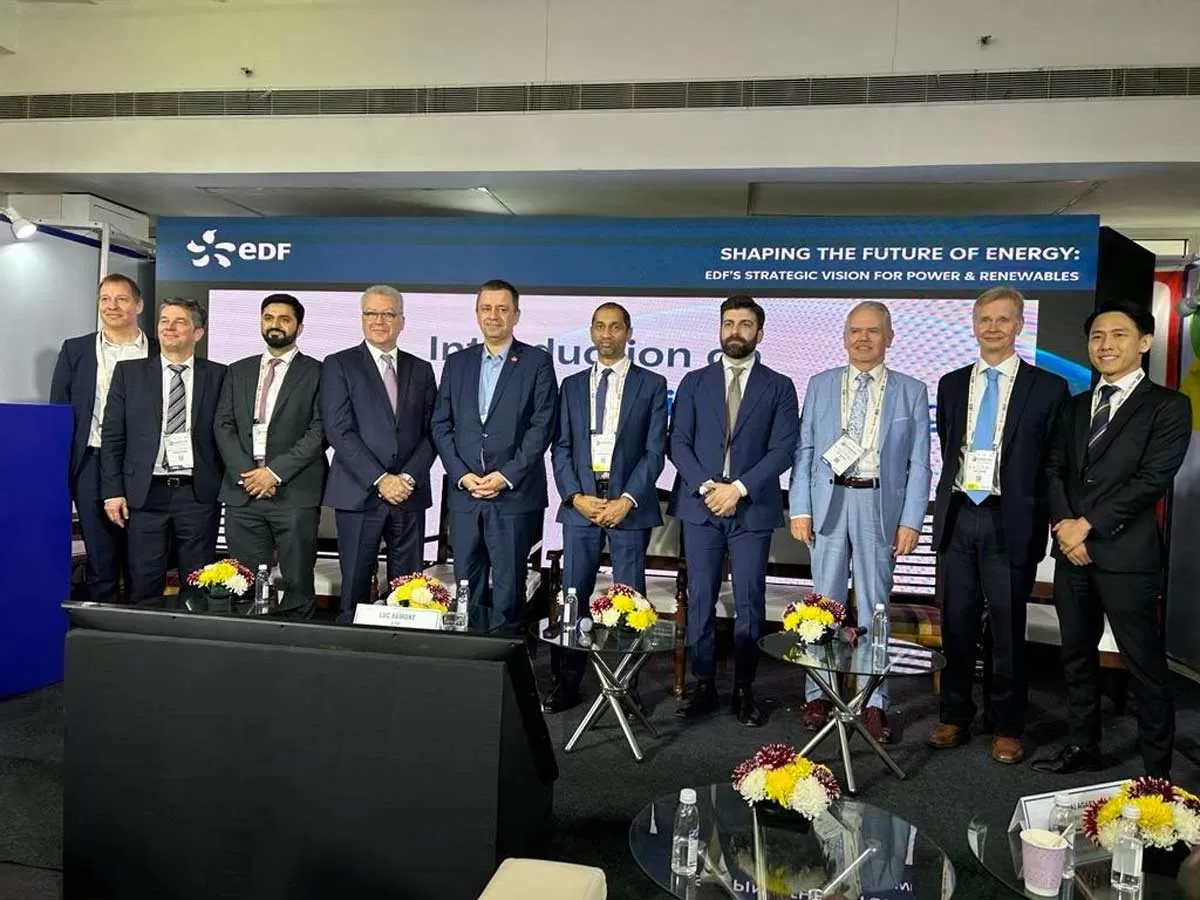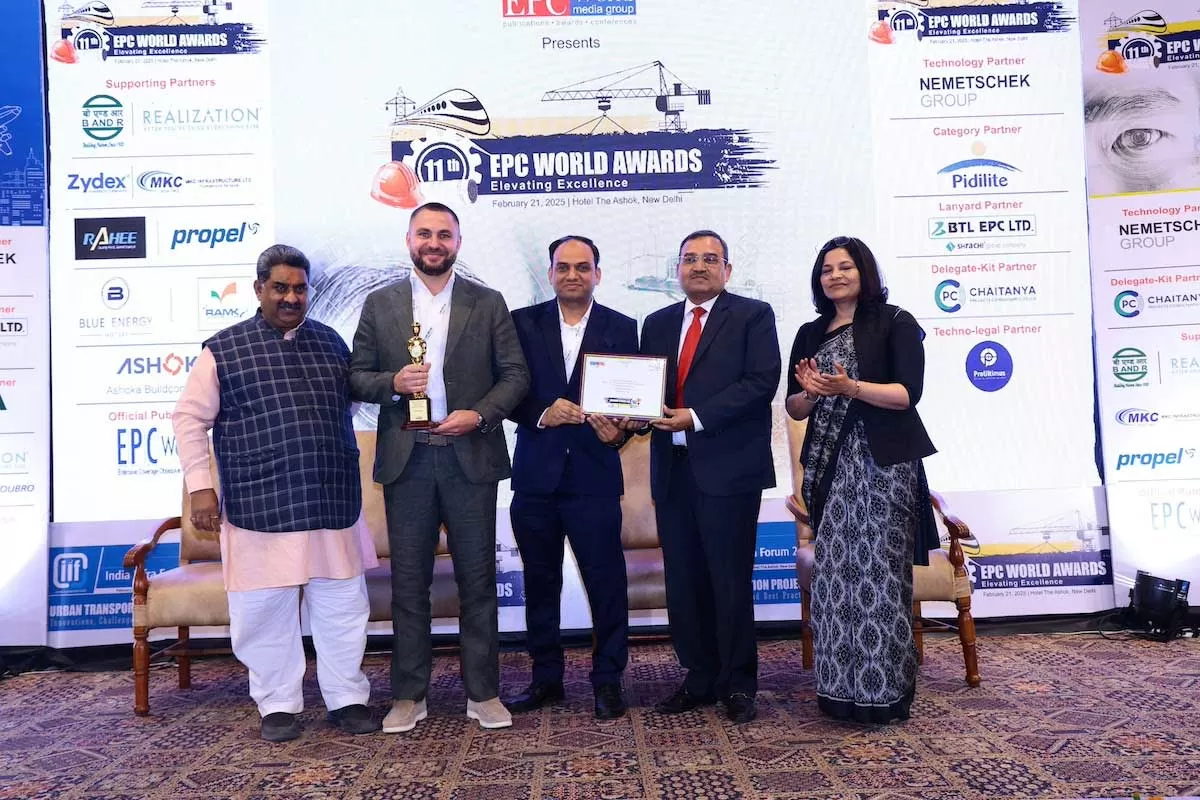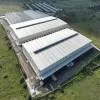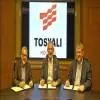Arun Misra,
CEO, Hindustan Zinc, speaks on the current scenario
of underground mining in India, and how IoT and digital technologies are
evolving in underground mining.
In light of the plans of infrastructure creation and reforms in mining,
what opportunities do you foresee for underground mining equipment?
Over
the past 150 years, the mining industry has been remarkably
successful in growing its productivity. Industry 4.0 is an ongoing
transformation of traditional industries with smart technologies.
Automation,
analytics, and artificial intelligence are changing the way mines operate.
Taking
a step closer to achieving carbon neutrality, Hindustan Zinc signed an MoU with Epiroc for zero emission
and sustainable mining by the
introduction of battery electric vehicle
(BEV) in underground mining. This will help Hindustan Zinc to explore the
possibility of introducing battery-operated vehicles in underground mines, which
will help reduce carbon emissions, enabling the mine operations to become more
environmentally friendly. The future is electric, and technologies such as
these will be at the forefront of smart operations.
Such
technologies will help in the future to allow a fleet of highly efficient
electric-powered equipment that at one end will lead to carbon neutrality by
replacing diesel-fueled equipment and on the other hand, will increase
productivity with its evolved design.
How has the second wave of Covid-19 impacted the underground mining
equipment industry?
FY21
began with the unparalleled challenge of Covid-19 and its unforeseen
consequences like the lockdown across the world. Mines across the world are
facing operational challenges to ramp up production while complying with social
distancing norms. Global mine supply continued to face Covid-related
disruptions and significant production was lost in China, Peru, Bolivia, and
Mexico a few of which are likely to be lasting in nature.
FY2021
witnessed suspension of business operations due to the lockdown in April 2020.
It was followed by exceptional workforce-related restrictions and safety
measures that had to be put in place through the rest of the year. It was a
year that saw some mine closures globally, coupled with new project delays.
We
at Hindustan Zinc ensured minimal effect on our business by making use of
digital infrastructure and its associated packages like Opti-Mine, OSI-Pi,
office-365, APC, and Org-wide CCTV surveillance. This infrastructure helped us
to ensure minimal footfall at the plant, reduced amassing, and far-off
operations with self-belief. Thermal scanners and contactless attendance were
few quick changeovers to maintain the hygiene and safety of the people. A
virtual platform like Office-365 has enabled a great level of remote
collaborations and helped our team to work from home in compliance with
Government’s directives on Covid-19. The pandemic has also played an important
role in capability building through digital learning platforms like Percipio.
What is the current scenario of underground mining in India?
Because
of the technological revolution, the nature of mining is constantly shifting
and most of the mines in India are open-pit mines, but the transition to
underground mining is around the corner. We need a huge number of metals and
minerals to support our country’s sustained growth in the infrastructure
sector, automotive sector, and power production. With mines going deeper, it is
always easier said than done. Need of the hour is not only mining but mining
with better safety, efficiency, and in a sustainable manner. Rightly,
underground mines in India are focused on increasing the use of technology,
skill upgradation to adapt technologies to increase efficiency and
productivity and minimising the cost to gain a
competitive advantage.
With
the government giving the push in the right direction by granting leases for a
longer duration, allowing 100 per cent FDI under the automatic
route (non-fuel, non-atomic minerals), greater transparency in government
policies, and low custom duty on capital equipment, the current scenario is
immensely positive.
With the government focusing on the vision of ‘Atmanirbhar Bharat’, how
would it catapult growth for the construction and engineering equipment market?
We
at Hindustan Zinc firmly believe that mining can be the cornerstone of
Atmanirbhar Bharat, and our natural resources can propel India’s dream of being
a $5 trillion economy. India is rich in natural resources, and it is time that
we look to mine what we have rather than importing it. A country can only
progress when it uses its resources to manufacture finished goods and not by
exporting its rich mineral wealth. This is the main concept behind ‘Make in
India’. We should be exporting the surplus zinc only after the
domestic demand is sufficient. The products of Hindustan Zinc are world-class
and have global acceptance. We have strategically positioned ourselves in a
very large Asian market, despite not having the best sea freights. A focus
market incentive for the Middle East and East Asian countries like Taiwan,
Malaysia, Indonesia, Bangladesh will greatly aid our ability to exports and
make us globally competitive.
What are the new developments in equipment and technologies in
underground mining? How IoT and digital technologies are evolving in
underground mining? Which is the major equipment used in underground mining
applications?
Hindustan
Zinc has always been at the forefront of adopting innovative solutions and
smart technologies for responsible mining. We recently adopted battery
electric vehicles (BEVs) in underground mining. This is a
first-of-its-kind initiative that has been taken up in India in the mining
sector and we are proud to be the leaders in bringing sustainable solutions
across operations. This technology will help us to drastically reduce carbon
emissions, enabling the mine operations to become more environmentally
friendly.
Our
current plan is to bring BEVs in the operational and support equipment at
specific levels in the unit. We are also planning to introduce mobile
miner technology in our mines. Mobile miner,
the rock cutting process is continuous and predictable, which makes planning
and scheduling much easier – a critical factor for
the mining industry to become more cost-efficient and predictable in their
operations. Further, we are looking at introducing mineral sizer technology
which is the latest innovation in the crushing industry providing a compact and
efficient way of comminution. We are using tele remote LHD, solo
equipment, and jumbo equipment that removes the operator from the hazardous
area and relocates them to a secure and protected location where they can
control the machine via remote with the help of multiple cameras and sensors.
Presently, our Sindesar Khurd underground mine
has tele-remote LHD and solo
equipment running and we are planning to expand this feature to our other units
as well.
The
automation and remote operation help use
the mine’s wireless network and allows the operator to
utilise the machine functions from a remote location
including, drilling levelling, tramming, and GPS hole navigation to increase
productivity, safety, and cost-efficiency of the process. Also, advances on the
Internet of Things (IoT) technology are enabling a connected network of
low-cost, highly capable sensors to capture data in real-time and enable
integrated planning, control, and decision support in our mines at Hindustan
Zinc.
Digital
twins (digitised geological,
engineering, and asset data) is another emerging technology that enables the
creation of digital models of the physical environment, constructed using
geological, engineering, and asset information. This can be continuously
updated with data from sensors and location-aware mobile devices enabling
robust real-time data-driven decision making. Additionally, for data
collection, inspection, stock control, condition, and safety monitoring, new improved
un-manned drones are also being used. LHD, LPDTs, jumbo, exploration
drills, and production drills are some of the major HEMMs
deployed in underground mining applications.
With
the latest in technology, now we have access to larger capacity intelligent
equipment with semi-autonomous and fully autonomous
capabilities, that enable us to run our operations unhindered with minimum
manual intervention, efficiency, productivity, and most important of all,
better safety. IoT and digital technologies are upcoming technologies which can
bring huge dividends as they enable improvement in efficiencies and
productivities along with real-time tracking of people and equipment. The
underground operation in India is on verge of transition from the conventional
to the autonomous operation. Shortly, there will be hardly any deposits left
near the surface and hence the underground operations shall become
more prominent and drivers of outcomes. The future depends on how well we are
prepared to address the deeper mining challenges.
What is your take on the future trend of underground mining in
India?
Technology
is the catalyst in making mining operations ‘smart’, ‘sustainable” and ‘safe’
by leveraging digital tools and processes that make operations instrumented,
interconnected, and intelligent. Some of the emerging technology trends that we
are fast integrating into our mines are in the areas of
automation
and remote operation, real-time
data capture, digital twins,
drones, mine to mill process integration,
hydraulic ore hoisting, and safety innovation.
The
automation and remote operation help use
the mine's wireless network and allows the operator to utilise
the machine functions from a remote location including, drilling levelling,
tramming, and GPS hole navigation to increase productivity, safety, and
cost-efficiency of the process.
Another
noteworthy technological intervention that we have successfully embraced in our
operations at Hindustan Zinc is the mine to mill
process Integration technology that maximises mine-to-mill metal
extraction. Similarly, hydraulic ore hoisting
provides a potentially cost-effective way of hoisting crushed ore from
underground mines to the surface. Another technology.
Safety
analytics technology effectively predicts potential harm and
offers the means to prevent it. We are consciously working with our partners
towards building and adopting these capabilities as we look at it as an
investment into the future of mining where sustainability, safety, efficiency,
and innovation are an integral part of operations. Increasingly, different
digital solutions are being bundled into the offerings of the equipment
manufacturers and service providers too.


















